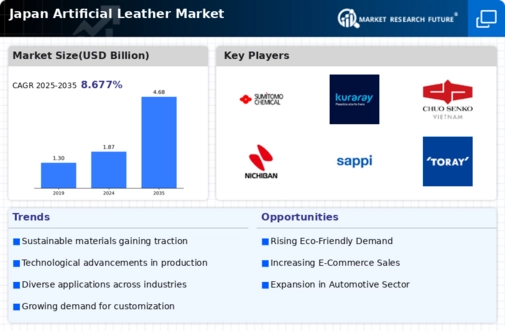The Japan Artificial Leather Market is characterized by its dynamic competitive landscape, evolving consumer preferences, and advancements in manufacturing technologies. This market has garnered significant attention due to the rising demand for eco-friendly and sustainable materials, which has shaped the strategies of key players. The competitive insights encompass not only the market share and product offerings but also the innovative approaches companies adopt to differentiate themselves in an increasingly crowded space. Factors such as product quality, pricing strategies, and the ability to adapt to changing regulations play a pivotal role in determining competitive advantages.
Therefore, stakeholders are actively seeking to understand these dynamics to position themselves effectively within the market.Sumitomo Chemical has positioned itself as a formidable player in the Japan Artificial Leather Market, leveraging its extensive experience in chemical manufacturing. The company is recognized for its commitment to quality and innovation, which is reflected in its diverse range of synthetic leather products catering to various industries, including automotive and fashion. One of the key strengths of Sumitomo Chemical is its research and development capabilities, enabling the company to introduce advanced materials that not only meet aesthetic criteria but also comply with environmental regulations.
Furthermore, the company's established supply chain and distribution networks within Japan allow it to maintain a strong market presence and respond swiftly to customer needs, enhancing its competitive edge.Kuraray is another influential entity in the Japan Artificial Leather Market known for its innovative approach and high-quality offerings. The company produces a variety of synthetic leather products that serve several applications across different sectors, including fashion, automotive, and interior design. Kuraray's focus on research and development has led to the creation of unique materials that emphasize both performance and sustainability.
This dedication has fortified its market position and allowed it to attract partnerships and collaborations within the industry. Additionally, Kuraray has strategically engaged in mergers and acquisitions to expand its reach and capabilities in the Japanese market, solidifying its presence and enhancing its portfolio of products and services. The alignment of its offerings with market demands ensures that Kuraray remains a critical player in meeting both consumer expectations and industry standards in Japan.






















Leave a Comment